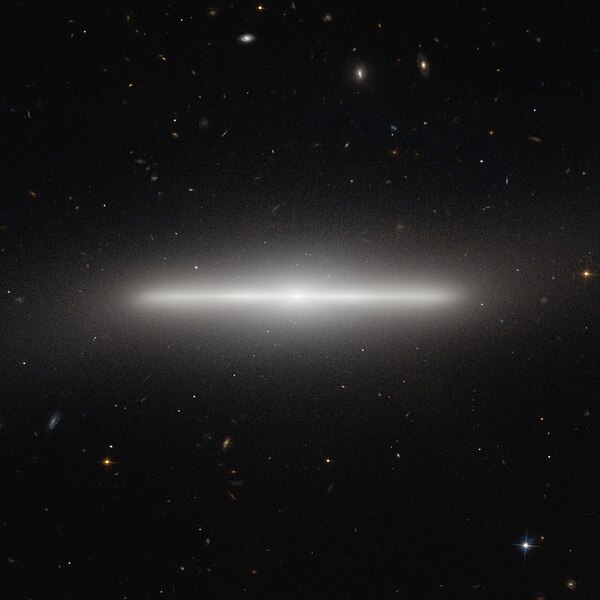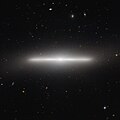Bestand:NGC 4452.jpg

Grootte van deze voorvertoning: 600 × 600 pixels. Andere resoluties: 240 × 240 pixels | 480 × 480 pixels | 768 × 768 pixels | 1.024 × 1.024 pixels | 2.048 × 2.048 pixels | 3.000 × 3.000 pixels.
Oorspronkelijk bestand (3.000 × 3.000 pixels, bestandsgrootte: 5,96 MB, MIME-type: image/jpeg)
Bestandsgeschiedenis
Klik op een datum/tijd om het bestand te zien zoals het destijds was.
| Datum/tijd | Miniatuur | Afmetingen | Gebruiker | Opmerking | |
|---|---|---|---|---|---|
| huidige versie | 14 dec 2010 20:49 |  | 3.000 × 3.000 (5,96 MB) | Antonsusi | Better jpg-quality, adjusted |
| 8 nov 2010 15:24 |  | 3.083 × 3.083 (3,01 MB) | Jmencisom | {{Information |Description={{en|1=The NASA/ESA Hubble Space Telescope has imaged a striking galaxy called NGC 4452, which appears to lie exactly edge-on as seen from Earth. The result is an extraordinary picture of billions of stars observed from an unusu |
Bestandsgebruik
Dit bestand wordt op de volgende pagina gebruikt:
Globaal bestandsgebruik
De volgende andere wiki's gebruiken dit bestand:
- Gebruikt op ar.wiki.x.io
- Gebruikt op az.wiki.x.io
- Gebruikt op be.wiki.x.io
- Gebruikt op ce.wiki.x.io
- Gebruikt op de.wiki.x.io
- Gebruikt op diq.wiki.x.io
- Gebruikt op el.wiki.x.io
- Gebruikt op en.wiki.x.io
- Gebruikt op eo.wiki.x.io
- Gebruikt op eu.wiki.x.io
- Gebruikt op fa.wiki.x.io
- Gebruikt op fr.wiki.x.io
- Gebruikt op hr.wiki.x.io
- Gebruikt op ja.wiki.x.io
- Gebruikt op kk.wiki.x.io
- Gebruikt op ko.wiki.x.io
- Gebruikt op lb.wiki.x.io
- Gebruikt op mk.wiki.x.io
- Gebruikt op ms.wiki.x.io
- Gebruikt op my.wiki.x.io
- Gebruikt op no.wiki.x.io
- Gebruikt op pl.wiki.x.io
- Gebruikt op pt.wiki.x.io
- Gebruikt op ro.wiki.x.io
- Gebruikt op ru.wiki.x.io
- Gebruikt op simple.wiki.x.io
- Gebruikt op sk.wiki.x.io
- Gebruikt op sr.wiki.x.io
- Gebruikt op tr.wiki.x.io
- Gebruikt op tt.wiki.x.io
- Gebruikt op uk.wiki.x.io
- Gebruikt op uz.wiki.x.io
- Gebruikt op www.wikidata.org
- Gebruikt op zh.wiki.x.io